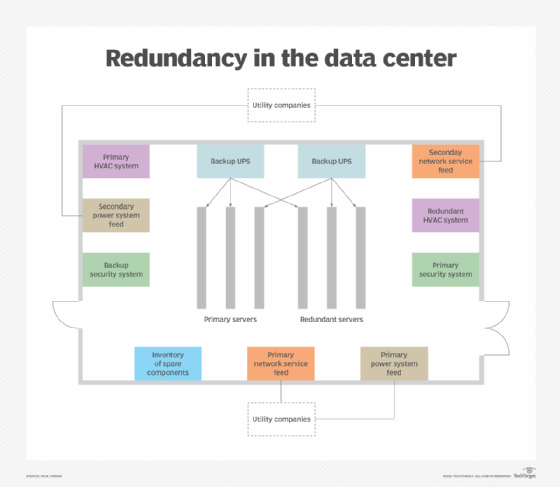How to Manage Redundancy Pay If Company Goes Bust: Key Info for UK Workers
How to Manage Redundancy Pay If Company Goes Bust: Key Info for UK Workers
Blog Article
Investigating the Interplay In Between Company Redundancy and Business Versatility for Future Growth
In the dynamic landscape these days's service world, the detailed relationship between company redundancy and organizational versatility becomes a critical aspect for continual development and success. Companies commonly deal with the challenge of striking a fragile balance between preserving a degree of redundancy to mitigate dangers and fostering versatility to respond promptly to the ever-evolving market demands. This fragile interplay holds the key to not just surviving in rough times however additionally growing in the face of unpredictability. As we explore the complex dimensions of this interaction, intriguing understandings right into exactly how companies browse these intricacies to lead the way for future development await.
Importance of Business Redundancy
Company redundancy is a vital aspect that boosts business durability and minimizes functional threats. By integrating redundancy procedures within the business structure, business can better stand up to unforeseen disruptions and variations in the service setting. Redundancy offers as a tactical barrier, allowing business to adapt and respond properly to unforeseen difficulties without endangering important procedures.
One trick facet of the relevance of company redundancy is its function in making certain continuity during times of situation. When confronted with unexpected changes or emergency situations, redundant systems, resources, or workers can tip in to maintain vital functions and stop widespread disruptions. This continuity not only safeguards the firm's track record and customer trust however also minimizes financial losses and functional downtime.

Approaches for Organizational Flexibility

An additional important approach is spending in modern technology and framework that can sustain versatility and scalability. Implementing digital tools, automation, and data analytics can streamline procedures, boost performance, and provide important insights for educated decision-making. Additionally, producing adaptable organizational structures that enable fast adjustments to market dynamics and client requirements is necessary for staying competitive in a quickly developing atmosphere. By proactively recognizing potential interruptions and opportunities, organizations can proactively prosper and adjust in an ever-changing business landscape.
Harmonizing Redundancy and Adaptability
Achieving a harmonious balance in between functional redundancy and organizational flexibility is vital in navigating the intricacies of a vibrant business setting. get redirected here Redundancy within a business gives a safety web, guaranteeing continuity and stability in operations. However, an unwanted of redundancy can cause inefficiencies and hinder flexibility to transforming market conditions. On the various other hand, organizational versatility allows firms to respond quickly to outside disruptions and seize new possibilities. Striking the right equilibrium in between redundancy and adaptability is a fragile process that requires a deep understanding of the organization's objectives, sector characteristics, and threat tolerance.
To achieve this equilibrium, firms need to perform routine analyses of their operations to identify locations where redundancy is essential for risk reduction and where adaptability can drive advancement and growth. Applying adaptable frameworks, cultivating a culture of constant discovering and renovation, and encouraging open communication throughout all levels of the organization are crucial approaches to balance redundancy and adaptability efficiently. By aligning these two critical aspects, firms can position themselves for sustainable growth and success in an ever-changing service landscape.
Study on Adaptation Success
In taking a look at instances of successful business adjustment, it ends up being obvious that the interaction in between functional redundancy and flexibility is a specifying consider forming resilient services. One compelling case research study is that of Netflix. Originally a DVD rental service, Netflix demonstrated amazing flexibility by transitioning into a streaming platform when digitalization disrupted the sector. By purposefully investing in innovation and material development, Netflix not just flourished but made it through in a quickly evolving market. Another standout example is Amazon. Beginning as an on the internet bookstore, Amazon constantly adjusted its company model, broadening into diverse fields such as cloud computing view website and expert system. This adaptability permitted Amazon to stay ahead of competitors and satisfy altering customer demands. Last but not least, Adobe offers a noteworthy image of effective adaptation. The firm moved from selling software licenses to a subscription-based design, making certain reoccuring profits streams and improved client engagement. These case studies highlight the relevance of functional redundancy combined with business flexibility in fostering lasting development and competition.
Building Strength for Future Growth
Building resilience for future development requires a calculated alignment of operational procedures with market characteristics and emerging fads. Firms must click for info adjust to changing settings by promoting a culture of adaptability, advancement, and constant renovation.
Furthermore, fostering solid relationships with stakeholders, such as customers, employees, vendors, and the neighborhood, is vital for maintaining and weathering uncertainties count on and support during turbulent times. Effective communication and openness play a crucial function in structure resilience, as they aid facilitate and align assumptions partnership in navigating uncertainties.
Moreover, companies need to focus on knowing and development initiatives to upskill workers and equip them with the required tools to adapt to altering scenarios. By spending in their workforce, firms can improve their versatility and agility, inevitably strengthening their resilience for lasting future growth.
Verdict

In the dynamic landscape of today's organization globe, the elaborate connection in between business redundancy and organizational versatility emerges as an important element for continual growth and success. Business usually encounter the challenge of striking a fragile equilibrium between keeping a degree of redundancy to reduce dangers and cultivating flexibility to respond swiftly to the ever-evolving market demands.To attain this equilibrium, firms need to carry out normal analyses of their procedures to determine locations where redundancy is necessary for risk mitigation and where adaptability can drive innovation and growth.In conclusion, the interplay between firm redundancy and business versatility is crucial for future development. Building strength via a combination of redundancy and versatility will certainly make certain that firms are prepared for the challenges of the future.
Report this page